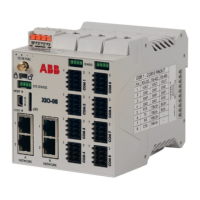44 | XIO USER MANUAL | 2106424MNAA
Use a unique Station ID for each XIO. The ID is limited to ten characters. It is
recommended to limit special characters to spaces or underscores (
_ ).
Table 4-3: Required station setup
alphanumeric
Name that uniquely identifies each installed XIO. This name is detecte
by remote controllers (using Auto Discovery) and must be unique. It is
recommended not to leave the factory default name even when
installing a single XIO.
alphanumeric
Describes the physical location of the device, such as the county name
or road number.
HH:MM:SS
(24-hour clock)
Date and time must agree with the collection equipment.
For initial installations, if you replied “yes” to the request to
synchronize data and time with your laptop when you connected with
the device for the first time, you do not need to change these values.
The XIO Station Setup function: Automatically Synchronize Time with
Controller, sets the time of the XIO to match that of the remote
controller it connects to (within a
. The purpose for this synchronization is to correlate events and logs on both
The recommendation is to turn synchronization on. If installing several XIOs for connection
ontroller, synchronizing each XIO to the controller means there is no need to
individually synchronize each XIO to the laptop at first time connection.
4.6 Configure network communication (4-port switch
mode)
The XIO network communication configuration depends on field scenarios. The XIO Ethernet ports support
several options. Network configuration provides TCP/IP based communication for:
– Remote management and access to the device from the corporate network: The XIO configured with
a valid IP address is available for remote monitoring connections and data collection.
– Measurement data transmission in the field: The XIO configured with a valid IP address is
discoverable and available for connection with Totalflow remote controllers polling for measurement
data.
For additional details on network configuration see section 10 Ethernet
or the Network Communication Guide listed in Additional information.
4.6.1 Sample connections
The following figures show high-level examples of XIO network connections. In these scenarios, the RMC
is the remote controller installed at the site. The XIO may be in the same cabinet as the RMC or
standalone in another cabinet at a distance from the RMC. Ethernet connection options depend on the
available network equipment, distance between devices, and number of devices.
In Figure 4-13
, both the XIO and RMC connect to their own ports on a network switch. Each can be
accessed remotely for management. Measurement data traffic flows between the RMC and the XIO.

